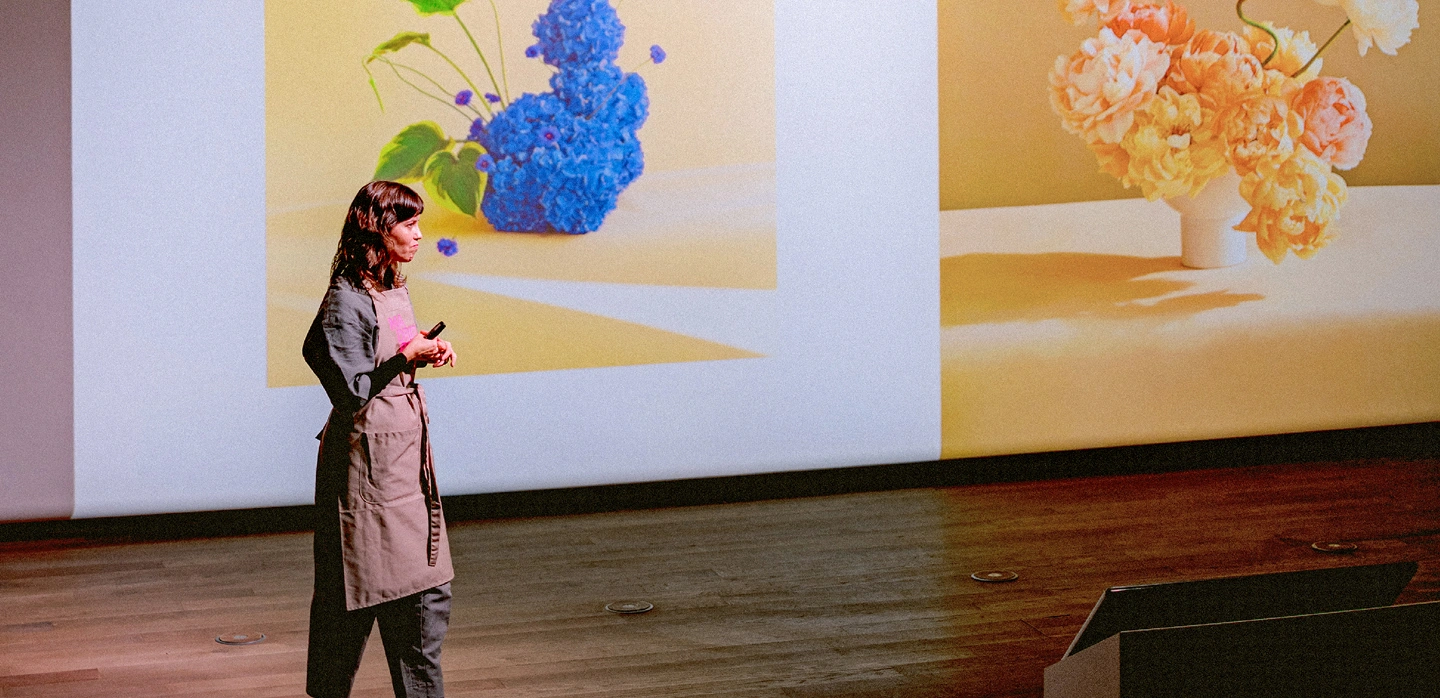How did you get started in the world of floral design?
I started studying floral art in 2015, a bit of a coincidence. At the time, I was looking for creative things that would bring me joy. Then one day, a friend suggested an introductory flower course, and that’s how it was. It started as a hobby, served as therapy, and now here I am. It wasn’t planned. When I saw how passionate I was, that’s when I decided I wanted to work with this. At first, I made small arrangements for close friends. My first job was for a friend, who wanted to make a gift and asked me for a bouquet. I decided to open the studio when more orders were starting to come in from people outside of São Paulo.
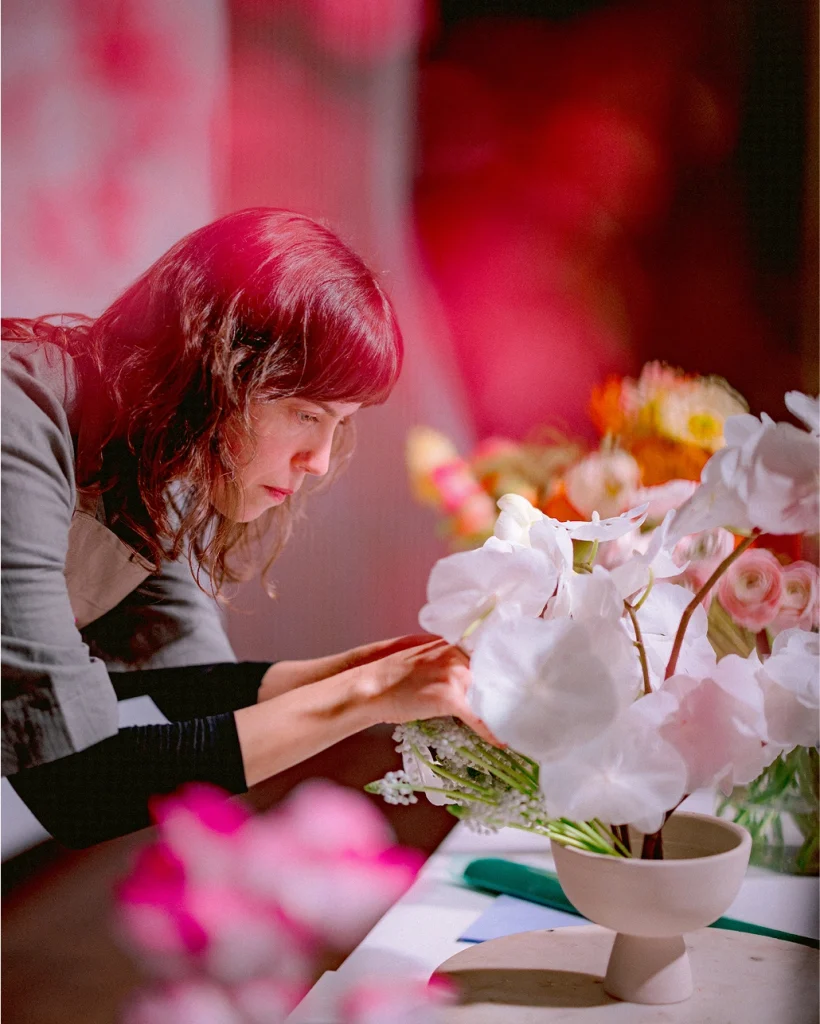
Are there specific themes, colors, or elements that you find yourself repeatedly drawn to in your work?
For me, color is very decisive. I like soft tones but with contrast. I like to play with color palettes. I also like to use materials in repetition. Transforming a single material into a mass of flowers, into lines or more specific shapes. At school, I use students’ leftover materials to recycle them in my projects.
“One of the most meaningful experiences of my career was starting to teach. It was a way to learn a little more about my own work.”
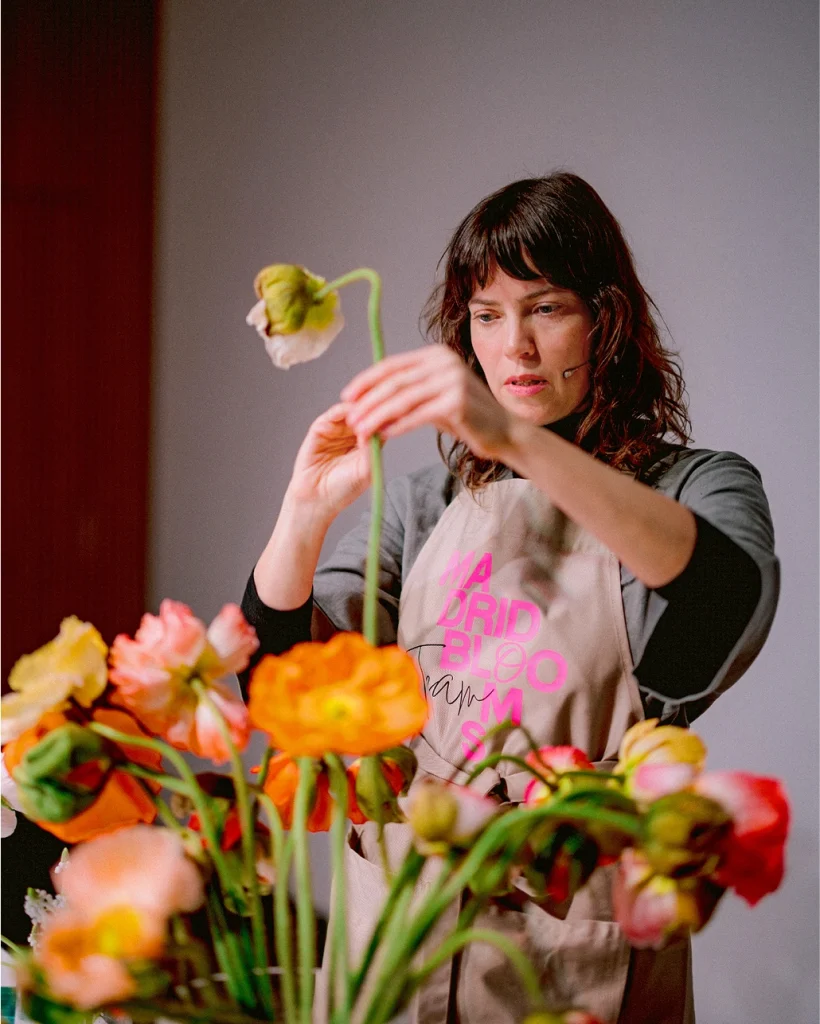
Who or what are your main sources of inspiration in the world of floral design?
Ikebana is a strong visual inspiration for me; it’s a source of knowledge. My entire career in floral art has always been strongly influenced by ikebana. It’s an incredible source of knowledge.
Are there other artists or designers, not necessarily in the floral industry, who inspire your work?
I’m passionate about the arts. Every movement brings something interesting. For example, Impressionist color palettes. I think I became interested in floral art because I saw that at some point it could be an artistic possibility I’d never considered, when I saw that it could be inspired by general art. I’m very inspired by the surrealist movement. Actually, all kinds of movements. But I especially like surrealism. I like René Magritte and Man Ray.
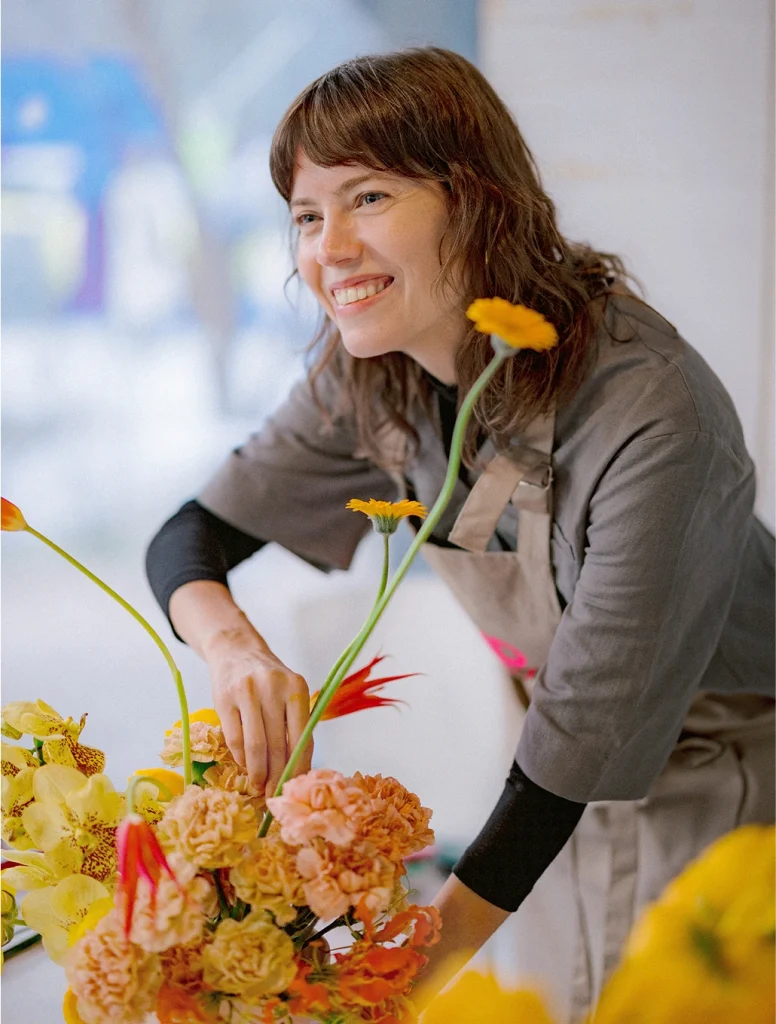
What has been the most significant learning experience in your career as a floral designer?
I believe that being in contact with other designers always brings a wealth of knowledge. Everyone works differently. You learn a lot from working with a team, with other people. One of the most meaningful experiences of my career has been starting to teach. It was a way to learn a little more about my own work. It was something I hadn’t considered in the past. It was a way to better understand how I work. I also learn a lot from my students.
Could you highlight one of your favorite floral design projects and what made it special for you? What was your most recent project?
In the end, I’ve done many projects here at school that I like, using materials from class. I’m really excited to be able to work using materials, rather than thinking about a closed idea. I prefer to work without restrictions. I don’t know if there’s any work on a larger scale; I prefer to work on a small scale. I like to work in a more empirical way. In Brazil, I often went to the flower market, and I liked seeing the materials, being up close and personal with the details of the flowers and the color. I like having direct contact with the flower. My latest work was a small sculpture made with leftover materials from the students’ classes last week. The last project I worked on was the publication of the book Spores.
Is there any event or client that stands out in your memory as particularly rewarding?
When I had my studio in São Paulo, I did everything myself. I started alone, delivering the flowers. Right when I was starting out, I was the one delivering them because I had few clients. It was very rewarding because I was able to accompany the entire process of someone wanting to send a bouquet, and as a representative, you go to deliver the gift and see the joyful face of the person receiving it. The whole process was very beautiful. I love bringing such beautiful emotions to people. It was a fun and rewarding part. I’ve also done weddings for friends.
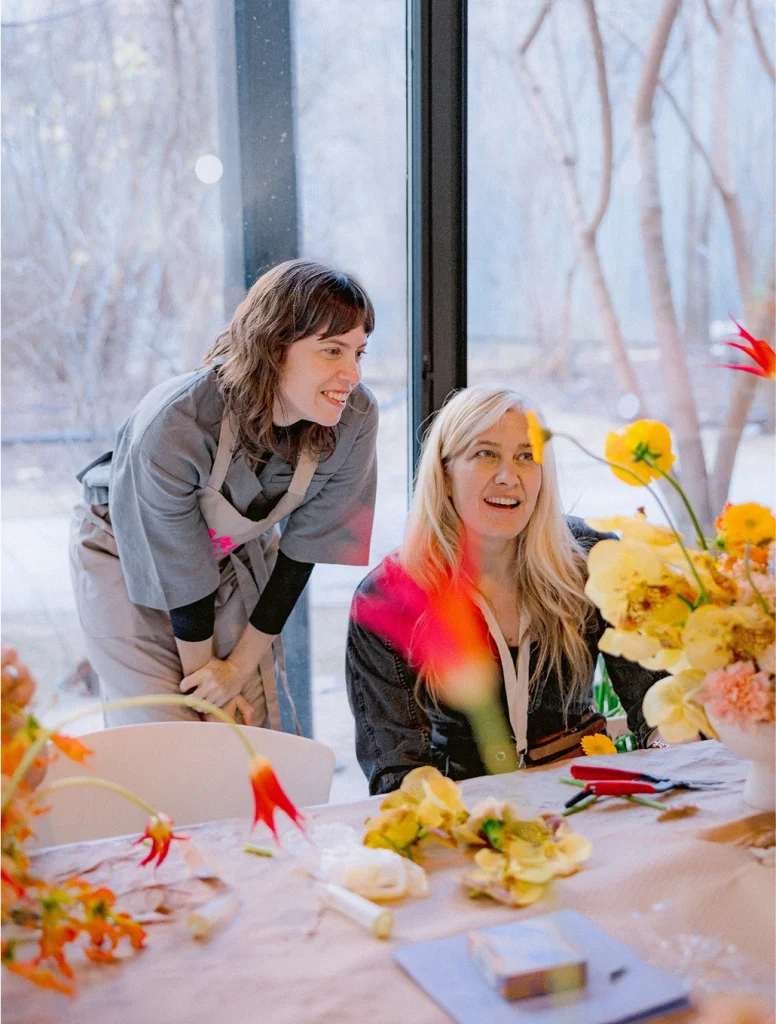
Are there any emerging trends or innovative techniques that you find particularly exciting?
I think it’s still a challenge to find techniques that can be a source of water but in a sustainable way. This is what challenges me the most: finding a way to keep flowers hydrated without causing so much harm to the environment. There’s still a lot of research to be done to develop more sustainable techniques.
What specific sustainable practices do you incorporate into your daily work as a floral designer?
I work a lot with Kenzan, with Flower Frog pieces. Also with chicken wire. But also, of course, for larger installations, it’s more complicated to find sustainable options. It’s a controversial topic, but the flower industry generates a significant environmental impact. We have to do something to reduce this impact. Ultimately, we’re working with nature, and we have to respect it. We need to raise awareness among florists about this issue.
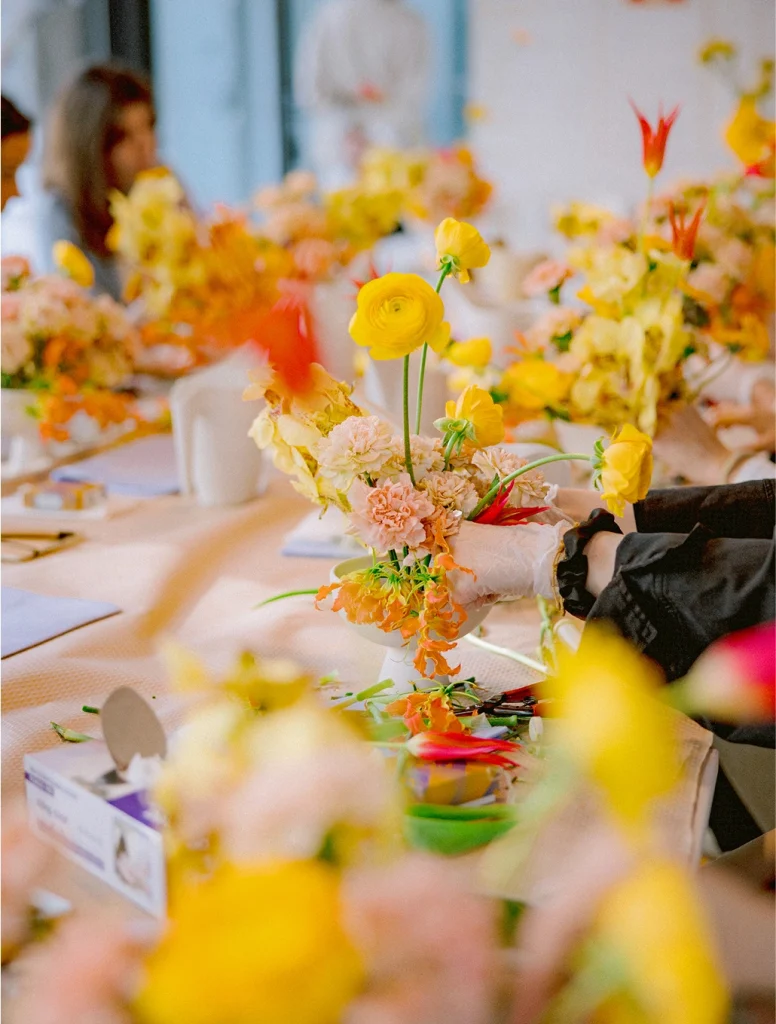
When people experience your floral designs, what message or emotion do you hope they take away?
I don’t know how people see my work. My work, for me, is about being able to revisit my creativity and have the freedom to make beautiful things, to experiment. I do it because it makes me happy. For me, it’s a game. My essence. I enclose myself in a world, to challenge space and materials. I hope to convey that, my essence.
PHOTOGRAPHY BY FACIBENI PHOTOGRAPHY
